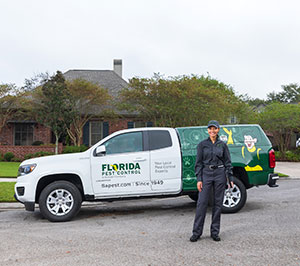Bed Bug Therapy Failure: Comparing Chemical Vs. Non-Chemical Solutions
In the realm of insect control, particularly when managing the persistent issue of bed insects, the choice between chemical and non-chemical therapy remedies can be a pivotal one. Both strategies provide distinct benefits and disadvantages, influencing variables such as performance, safety and security factors to consider, and general price. By taking a look at the nuanced details of each method, a more clear understanding of which course to pursue in attending to a bed insect invasion can be attained.
Performance of Chemical Treatments
Chemical therapies for bed bug invasions have been commonly recognized for their rapid and potent efficiency in eliminating these bugs. When considering the performance of chemical treatments, it is vital to comprehend that they can supply a comprehensive and quick remedy to a bed insect trouble. Specialist pest control operators frequently count on pesticides to target bed insects at different phases of their life process, consisting of eggs, fairies, and adults. These chemicals generally work by disrupting the bed bugs' nerve system, bring about paralysis and ultimate death.
Furthermore, chemical therapies have the benefit of providing residual impacts, meaning that they can proceed to get rid of bed pests also after the preliminary application. This recurring action is specifically helpful in combating any possible re-infestations. Additionally, the quick activity of chemical treatments can bring alleviation to individuals encountering extreme bed bug problems, enabling them to restore control of their home rapidly.
Security Issues With Chemical Solutions
One crucial element that needs cautious consideration when making use of chemical options for bed insect treatment is making sure the security of passengers and the atmosphere. Exposure to specific chemicals made use of in bed bug therapies can lead to respiratory concerns, skin irritability, or other unfavorable reactions, specifically in individuals with pre-existing conditions or level of sensitivities.
Moreover, the ecological effect of chemical remedies is one more substantial factor to consider. Some pesticides made use of in bed bug therapies might be harmful to valuable insects, wild animals, and communities if they seep into the dirt or water supply. It is vital to make use of chemical therapies carefully, adhering to safety guidelines, and taking into consideration much less toxic options to mitigate these dangers and guarantee the effective and safe management of bed pest infestations.
Benefits of Non-Chemical Methods
Taking into consideration the possible safety issues and environmental effect connected with chemical options for bed pest therapy, discovering non-chemical methods provides a promising choice with several distinctive benefits. Non-chemical techniques supply a more secure alternative for households, particularly those with kids, individuals, or pet dogs conscious rough chemicals. These methods get rid of the dangers of exposure to toxic substances, minimizing the capacity for adverse wellness impacts. Moreover, non-chemical treatments are environmentally pleasant, as they do not add to air or water pollution, making them a sustainable selection for bug control.
Additionally, non-chemical remedies can be efficient in targeting bed bugs, including hard-to-reach locations where chemical treatments might not penetrate. Techniques such as warm treatment, vacuuming, steam cleansing, and cushion coverings provide detailed removal without making use of unsafe chemicals. Moreover, non-chemical strategies can be less turbulent, calling for minimal preparation and permitting quicker reentry right into dealt with locations. Overall, opting for non-chemical bed bug treatment methods not only prioritizes security and ecological defense however likewise makes sure extensive and efficient bug control.
Limitations of Non-Chemical Treatments

In addition, non-chemical treatments often need numerous applications to achieve successful elimination. This can be taxing and might not look these up always assure full removal of all bed insects and their eggs, particularly in hard-to-reach or concealed places.
Additionally, the success of non-chemical treatments heavily depends on appropriate application and thoroughness, which can be testing for people without specialist competence. Poor application of non-chemical approaches may lead to incomplete eradication, resulting in relentless problems and the need for extra therapies.
Therefore, while non-chemical therapies have their benefits, it is vital to acknowledge these constraints and consider them when establishing one of the most efficient method for managing bed bug infestations.
Price Comparison: Chemical Vs. Non-Chemical Options
Given the limitations related to non-chemical therapies, an important element to examine in the context of bed pest monitoring is the cost contrast between chemical and non-chemical alternatives. Chemical treatments normally include the application of pesticides by specialists, which can vary from $250 to $900 per room, relying on the intensity of the infestation and the size of the area to be treated. On the other hand, non-chemical therapies like warm therapy or vapor can be a lot more costly, with costs ranging from $1,000 to $6,000 for an entire home. While the preliminary price of chemical treatments may appear reduced, numerous therapies may be needed to fully remove the invasion, possibly enhancing the general expense. On the other hand, non-chemical choices might offer an extra environmentally friendly and lasting remedy, although they can be cost-prohibitive for some people. Inevitably, when considering the cost of bed insect treatment alternatives, it is essential to evaluate the in advance costs against the effectiveness and long-lasting sustainability of the picked technique.
Verdict

Considering the possible safety problems and ecological effect connected with chemical options for bed bug treatment, checking out non-chemical how to get rid of mice methods provides an appealing alternative with numerous distinctive advantages.Given the restrictions connected with non-chemical therapies, a vital aspect to evaluate in the context of bed pest management is the price contrast in between chemical and non-chemical options. In contrast, non-chemical treatments like Read Full Article heat treatment or vapor can be extra expensive, with costs varying from $1,000 to $6,000 for a whole home. While the first price of chemical treatments may seem reduced, numerous treatments may be needed to totally get rid of the infestation, possibly boosting the general cost.In final thought, when comparing chemical and non-chemical bed bug therapy choices, it is important to take into consideration effectiveness, safety, advantages, restrictions, and price.